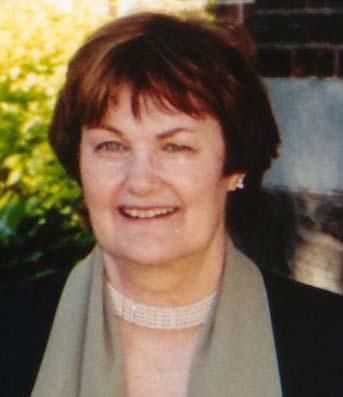

Mary-Claire Ward
Geoscience Award
About Mary‑Claire Ward
The Mary‑Claire Ward Geoscience Award was created to honour the memory of Mary-Claire Ward who passed away in 2004.
Ms. Ward was a former chair of the PDAC’s Geoscience committee, Chairman of Watts Griffis McOuat Ltd., and a Past President of the Geological Association of Canada. She was a passionate advocate for the geosciences in Canada. Mary-Claire was a tireless and vocal advocate for government investment in basic geoscience in Canada. She was especially supportive of mapping programs to ensure Canada’s geological knowledge base was conceptually and factually correct in order that it might support private sector investment in the mineral sector.
Comprising $5,000 and a certificate, the award is given annually to encourage and support a full-time, graduate student in Canada whose thesis is likely to increase our knowledge of the geological history of Canada through mapping.
The award is administered by the Geological Association of Canada (GAC), the Prospectors & Developers Association of Canada (PDAC), the National Geological Surveys Committee, the Canadian Geological Foundation, and Watts, Griffis and McOuat Ltd.
Applications will reopen on October 1.
Recipients of the Mary-Claire Ward Geoscience Award
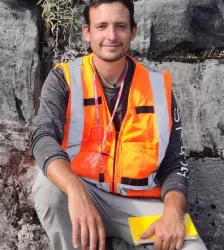

Preservation of Taconic eclogites in Newfoundland’s Baie Verte Peninsula indicates that parts of the Early Paleozoic Laurentian passive margin were buried to great depths during collision with an exotic arc in the Middle Ordovician.
Ludovico's research aims to better understand the geological history and processes responsible for burial and exhumation of the Taconic eclogites and surrounding units through detailed structural, petrological and geochronological studies.
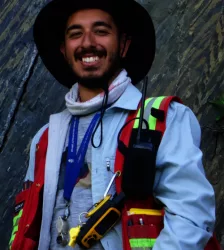

For his PhD, Darius’ research aims to establish how rock deformation during crustal shortening events impacts the distribution, preservation, and grade of sediment-hosted massive sulfide (SHMS) Zn-Pb deposits. It is focused on the region of the Selwyn basin that stretches along the border of Yukon and Northwest Territories, around and between the Howard’s Pass and MacMillan Pass deposits. Mapping will focus on 4D (temporal and spatial) geometric and kinematic analysis.
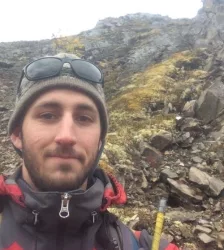

For his PhD, Ben is investigating the Archean to Paleoproterozoic tectono-magmatic evolution of the western Rae craton in the Nonacho Lake area of the southeastern Northwest Territories.
This research involves regional and detailed mapping of orthogneiss and granitoid rocks, whole-rock geochemistry, U-Pb geochronology, and isotope (O, Hf, Nd) tracer work. The results are being used to identify different magmatic suites in the area, and to understand their role in the growth, reworking and stabilization of the Rae craton.
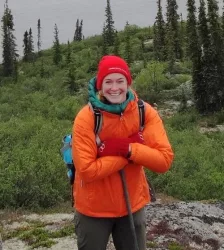

Rebecca’s MSc thesis investigates the Paleoproterozoic structural evolution of the western margin of the Rae craton exposed in the Nonacho Lake area of the southeastern Northwest Territories.
This work integrates regional and detailed bedrock mapping, microstructural analyses, U-Pb geochronology and 40Ar/39Ar thermochronology. Her results will be used to constrain the cooling history of the region and the timing and kinematics of major domain-bounding structures.
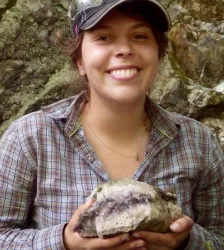

Kendra's MSc. research seeks to constrain the Neoarchean evolution of progressive deformation and orogenic gold mineralizing events in the western Wabigoon subprovince of Canada's Superior Province.
Her research integrates legacy data, new field observations, microstructural analyses, and U-Pb geochronology to revise the structural and metallogenic evolutionary history of the region. Results will document the influence of structural evolution of greenstone belts on their differential gold endowment, and will assist future orogenic gold exploration in the western Superior Province.
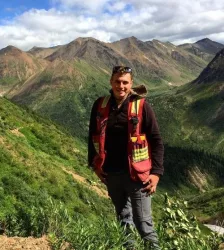

Andrew’s research aims to map auriferous fluid pathways, identify the salient geological controls on fluid flow and assess the physiochemical evolution of ore fluids in the CTGDs of the Nadaleen trend, Yukon. Detailed geology maps of the deposit and surrounding areas were made, and a comprehensive structural study was undertaken. Ore fluid pathways were interpreted within this geological framework to establish the timing of Au-mineralization relative to deformation events and to assess the significance of potential geologic controls on fluid flow.
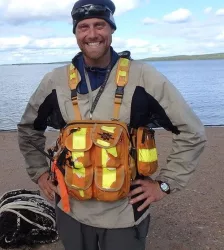

Eric's thesis investigates the Paleoproterozoic tectono-metamorphic evolution of the south Rae craton in southeastern NWT. This work entails regional and detailed bedrock mapping, structural, metamorphic and isotopic analyses of multiply deformed terranes and crustal-scale shear zones.
The study will evaluate the nature of metamorphism and exhumation across the south Rae craton, which may be influenced by the Snowbird tectonic zone, Taltson magmatic zone and/or the Trans-Hudson orogen between 2.0 and 1.8 Ga.
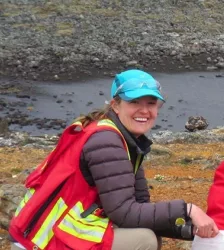

Holly's PhD thesis involves new regional bedrock mapping in an underexplored part of the south-central Rae craton, in the Tehery Lake–Wager Bay area of northwestern Hudson’s Bay, Nunavut.
Holly is determining the areas regional tectonometamorphic history as recorded by supracrustal rocks. She will use the results to evaluate the character, timing, and duration of metamorphic processes that developed in this area associated with the 1.86-1.83 Ga Trans-Hudson orogeny.
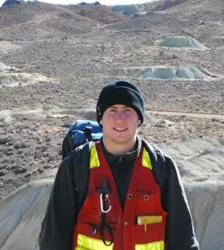

Jordan's M.Sc thesis focused on the structural and hydrothermal evolution of gold mineralization in the Missanabie-Renabie district, Ontario, Canada by integrating detailed field mapping with a number of geochemical techniques. The product provides the data needed to characterize and constrain gold mineralization hosted within a ca. 2.72 Ga tonalite batholith in the context of regional geology and deformation.
The results contribute to furthering the understanding of gold metallogeny in the district in order to aid the mineral exploration industry.
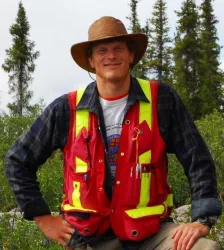

Jesse's PhD project is focused on early Earth processes as recorded in the ~4.0 billion-year-old Acasta Gneiss Complex in the Northwest Territories. Specific questions that are being addressed relate to the nature and tectonic setting of crust formation on the early Earth as well as secular trends documented within the ~600 million years of magmatism present within the Acasta Gneiss Complex.
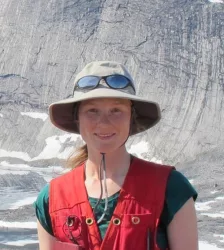

Diane's PhD thesis entitled “Paleoproterozoic metamorphism and deformation on Hall Peninsula, Baffin Island, Nunavut” aims to decipher the Paleoproterozoic tectonometamorphic history of Hall Peninsula using a combination of field data acquired by geological mapping and analytical data obtained by innovative techniques in geochronology, thermochronology and mineral chemistry.
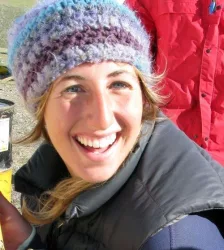

Danelle's PhD project is titled "Sedimentology, sequence stratigraphy, and stable isotope stratigraphy of the Tonian‐Cryogenian Shaler Supergroup, Victoria Island, Northwest Territories, and investigates sedimentary rocks of the early Neoproterozoic Shaler Supergroup that are well‐exposed in the Minto Inlier on northwestern Victoria Island, Northwest Territories".


Deanne's PhD thesis is titled “Origin and geological history of Proterozoic, Paleozoic and Mesozoic rocks in the southern Thor-Odin area, B.C, based on mapping, structural, geochemical, geochronological and thermochronological constraints: Implications for accretionary tectonics and orogenesis in the southern Canadian Cordillera.”
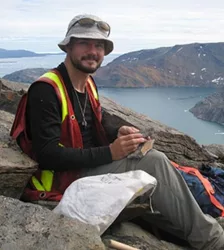

Brett’s PhD thesis focuses on competing tectonic models of the Trans-Hudson Orogen. It has recently been proposed that Cumberland Peninsula (CP) belongs either to the North Atlantic Craton (NAC), forming the upper tectonic plate in a continental collision1, or the Rae Craton, forming the lower plate during microcontinent accretion2. Pressuretemperature-deformation-time (P-T-d-t) paths followed by rocks during tectonic events are indicative of tectonic processes3; therefore, P-T-d-t paths constructed through field observations and analyses of metamorphic rocks will enhance our understanding of the regional geology and test tectonic models.
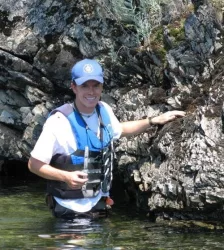

Joel's Ph.D. thesis, "Structure and metamorphism of the Grand Forks Complex (GFC), British Columbia" aims to integrate a number of geologic disciplines to construct a tectonic model for the GFC, while addressing a number of specific problems, including 1) quantifying displacement on the bounding normal faults, 2) unraveling polyphase folding within the complex and establishing the timing of deformation relative to metamorphism, 3) using petrological analyses of disequilibrium mineral textures to quantify multi-stage exhumation, and 4) integrating new U-Pb (monazite & zircon) and apatite fission track (AFT) dating with existing geochronology to provide absolute ages for the timing of the distinct tectonic and metamorphic events.
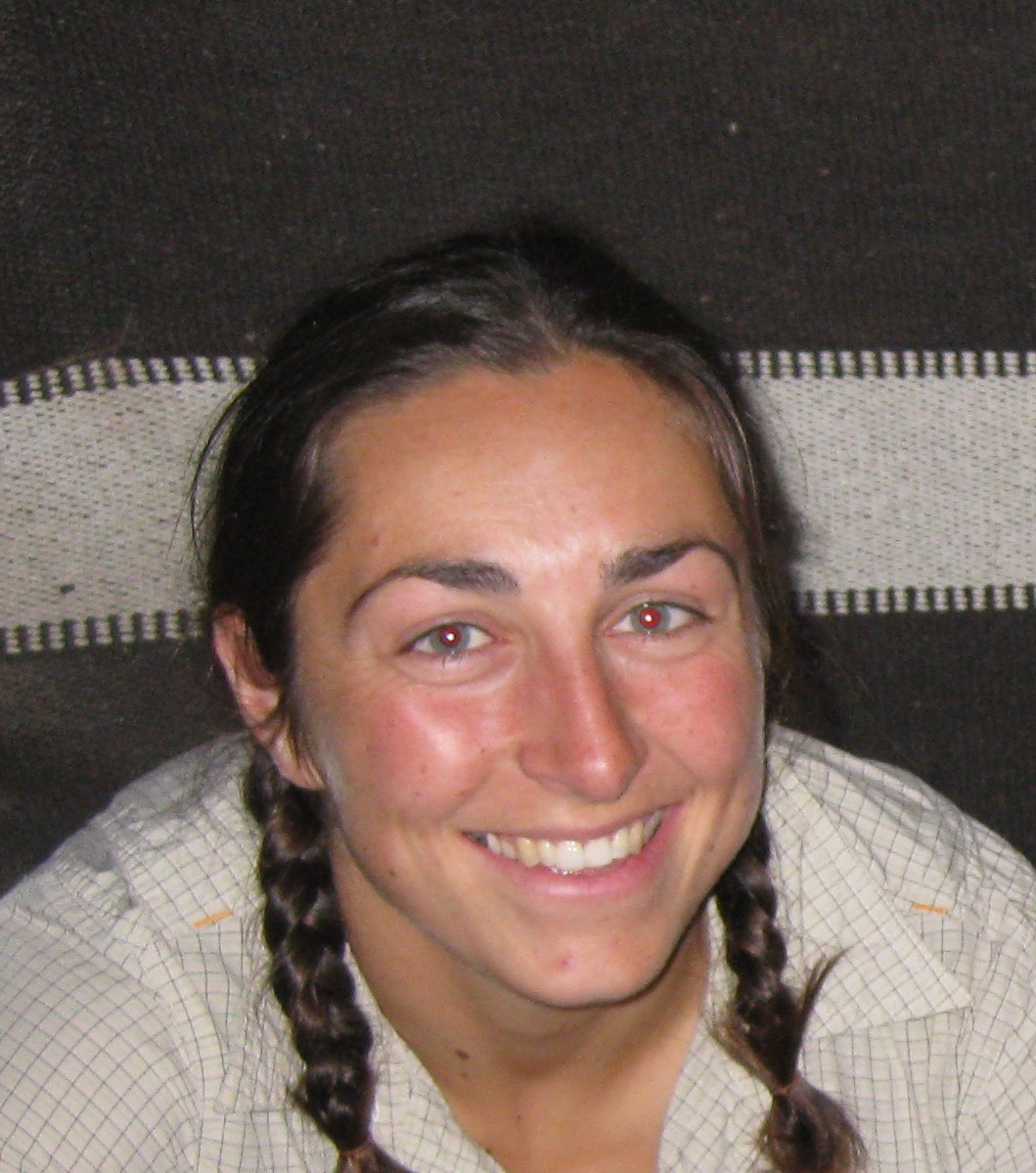
|
A second cash prize of $1,000 was awarded for the first time to University of British Columbia student Rose Cobbett. Her M.Sc. thesis is titled "The timing and kinematic evolution of the Duke River fault, southwest Yukon: Insights into the formation of the western Cordilleran orogen". |
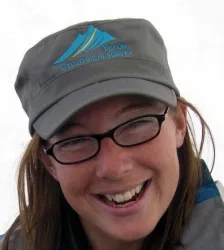

Elizabeth's MSc. topic is entitled 'Constraining the conditions and timing of deformation and metamorphism of the Yukon-Tanana terrane in parts of the Mendocina Creek (NTS105F5) and Livingstone Creek (NTS 105E8) areas of south-central Yukon.
It is focused on resolving the complex geological evolution of the eastern Yukon-Tanana terrane in south-central Yukon. This project will contribute to the current stratigraphic knowledge of Yukon-Tanana terrane and will compliment regional studies completed under the Ancient Pacific Margin (NATMAP) program.


His PhD research project is titled 'Geology of the world-class Roberto gold deposit' Eleonore property, James Bay, Quebec.
The purpose of this study is to present a geological description of the deposit and provide insights on geological features that likely played a role in its formation and can be used to help exploration programs. Using regional and local geological mapping and structural analysis, core logging, petrography, and geochronology, efforts are focused on acquiring an understanding of the regional geology, the relative ages of the main lithologies, and the geochemical characteristics of the deposit in order to better define the timing between metamorphism, deformation, magmatism, and gold mineralization. An important part of the project is also devoted to the elaboration of a state of the art km-scale 3D geological Gocad model based on information extracted from over 600 drill holes, in order to better understand the deposit’s subsurface geology and geometry.
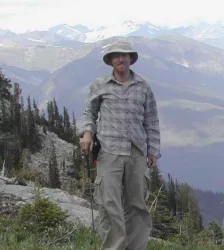

Andrew’s research project is titled 'The structure of the Cranberry Mountain region of the Thor-Odin dome, Monashee Complex, and its bearing on the tectonic evolution of the Canadian Cordillera in southeast British Columbia'.
The ultimate goal of this project is to develop a tectonic model that resolves the relative importance of each of these processes. The model must also be consistent with field and petrographic observations, and temporal constraints outlined by previous studies.
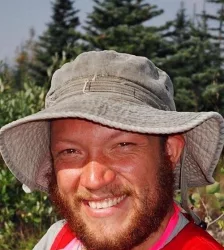

Tony's thesis is titled 'Tectonic and petrogenetic evolution of Early to Middle Jurassic Hazelton Group volcanic rocks, northwestern British Columbia: Physical and geochemical anatomy of an arc to rift transition.'
This thesis will lead to the development of a model that will describe the petrogenesis of the Hazelton Group volcanic rocks in the context of what will be a better understood tectonic and ore-forming environment.


Michelle's PhD thesis is titled 'Volcanic Reconstruction of the Paleoproterozoic Hidden and Louis Formations, Manitoba, Canada.'
This study thus provides a rare opportunity where abundant exposure, excellent preservation and drill hole and underground information are available, allowing for the unraveling and description of the magmatic and volcanic evolution of a subaqueous back-arc volcano, and the hydrothermal system responsible for the formation of a world class, gold-rich, VMS ore system. The results of this work will aid in both the exploration in the Flin Flon camp, and the understanding of VMS deposit formation and the factors that control the localization of VMS deposits during the evolution of submarine complexes.
